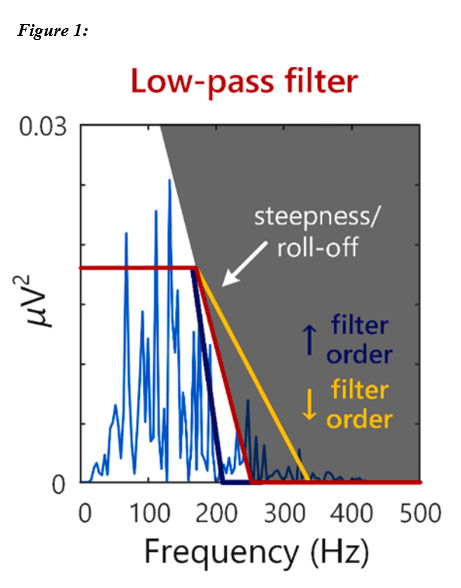Glossary
A change in the mean firing rate of a motor unit during a voluntary muscle contraction. Both motor unit recruitment and rate coding can be used to modulate force production.
(McManus et al., 2021)Often defined as the force or torque at which a motor unit begins to discharge action potentials repetitively. Recruitment threshold has also been estimated from the amplitude of the EMG signal when a motor unit begins to discharge repetitively. The recruitment threshold is sensitive to the task, type of muscle contraction, contributions from other muscles and the history of muscle activation. The force/EMG amplitude at recruitment are indirect approximations of the recruitment threshold of a motor unit. Furthermore, it is often difficult to quantify the force produced by a single muscle in isolation.
(McManus et al., 2021)The translation of a signal into a signal with a single polarity (i. e., positive), obtained by taking the absolute value of the signal at each instant in time. When calculating the RMS or ARV amplitude of an EMG signal, x(t), the mean value of the signal should be subtracted from the total signal length (or the signal should be high-pass filtered) before rectifying (i.e., x(t) should be a zero-mean signal prior to calculating |x(t)|).
(McManus et al., 2021)Resistance is a measure of the opposition to the flow of electric current, measured in Ohm. DC (direct) current will tend to follow the path of least resistance in a circuit. AC current (alternating sinusoidal current of a given frequency) will tend to follow the path of lowest impedance. Impedance alters both the magnitude and phase of current flow and can vary as a function of frequency.
(McManus et al., 2021)The roll-off of a filter describes the rate of change in signal attenuation between frequencies that pass through the filter unattenuated (passband) and frequencies that are attenuated by the filter (stopband), as shown in Figure 1. It is measured in either decibels/decade or decibels/octave, where a decade is a tenfold increase in frequency and an octave is a twofold increase in frequency. Related term: FilterHigher order filters have higher roll-off values (steeper transitions between passband and stopband frequencies).
(McManus et al., 2021)
We value your feedback
Let us know how helpful you found the recommendations above and how we can improve: